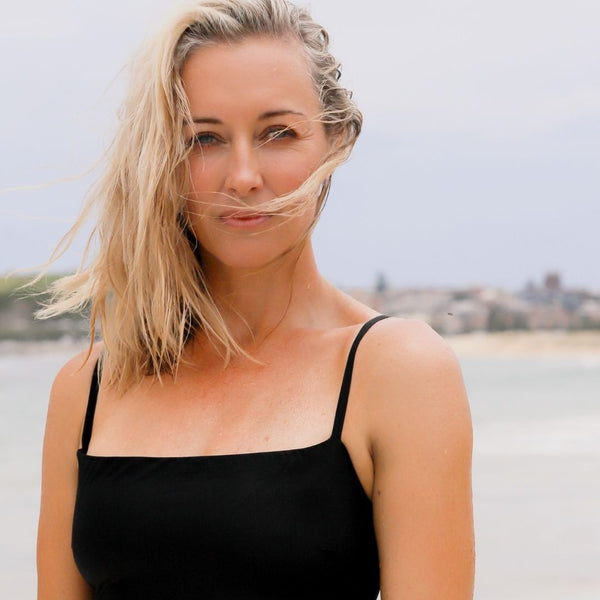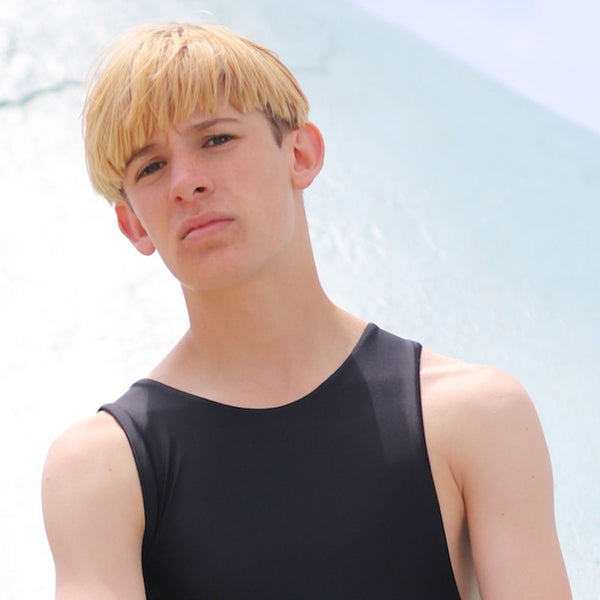I am one of the 30% of people who are left-eyed. You can test your eyedness by staring at a small object some distance away, like a wall clock or door knob. Hold your hands at arm's length, make a small O-shape between them, then use the O to tightly frame the door knob. If, when you close your right eye, the object disappears behind your left hand, you will know you're among the majority of people whose dominant eye is their right one.
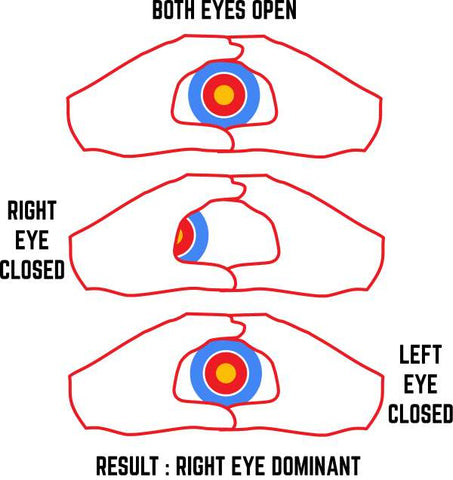
When I close my right eye, the doorknob stays put. This tells me that when both of my eyes were open, I was actually seeing the doorknob with my left eye. All my right eye was doing, was telling my brain the doorknob was three, not three-hundred, meters away.
Eyedness can be a big deal in some fields. It's so important in archery that both right-eyed and left-eyed bows are produced.
But as far as the makers of cameras are concerned, the left-eyed among us (like the left handed), can put up or shut up. Either we can put our lazy right eyes to our viewfinders, or suffer sub optimal ergonomics.
When I started shooting with an SLR camera, in 1984, we were taught to use whichever eye we saw best through. The dominant eye has more neural connectors between it and the brain, and we would need those to determine if a shot was in focus. It wasn't so hard, because in those days, the viewfinders of SLR cameras were typically centred and the backs of camera bodies weren't covered in buttons waiting to be bumped by left-eyed photographers' noses.
But even back then, there were left-eyed photographers who were happy to use their right eyes. I'm thinking of photojournalists and street photographers, big fans of rangefinder cameras that have viewfinders off to the left. They can use their lazy right eyes with these cameras, because focusing and framing news and street photos isn't really that hard. Most such photos are taken using the zone focus method (basically, a small aperture so more of the scene is in focus) and a wide angle lens to frame all of the action, plus a bit more. The critical thing for these photographers is situational awareness and timing, that I presume left-eyed photographers were even more skilled at, having their dominant eyes free for surveying the scene.
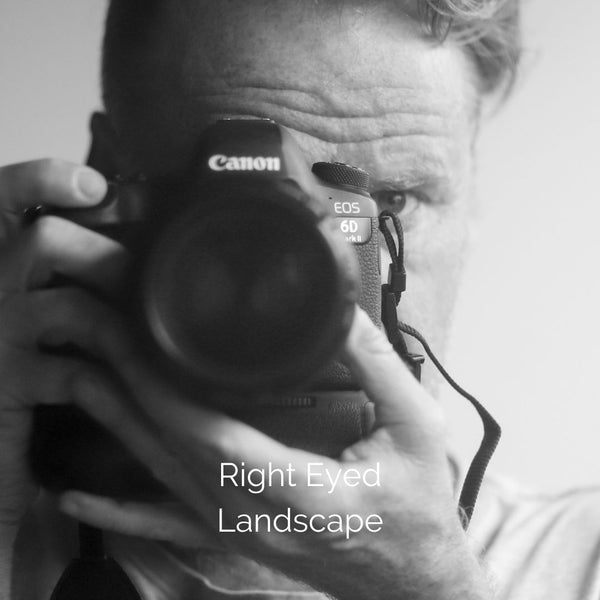
But for someone like me, shooting portraits where everything except models' faces are blurred, focus is crucial. Just picking a deep focal zone and putting my lazy right eye to the viewfinder, was never an option for me. And anyway, why would I, when I had my photography teachers lavishing praise on me for my "good eye"? The fact that it was my left one, was neither here nor there to my teachers. What mattered was that I could find focus and find contrasting light and strong compositions. My left eye was serving me grandly!
Speaking from my experience (which is all that I know) I don't think I could have taken the photos I did, with one eye surveying the scene. When your weak eye is blinded, you're not in the moment. You're inside the photo you're making.
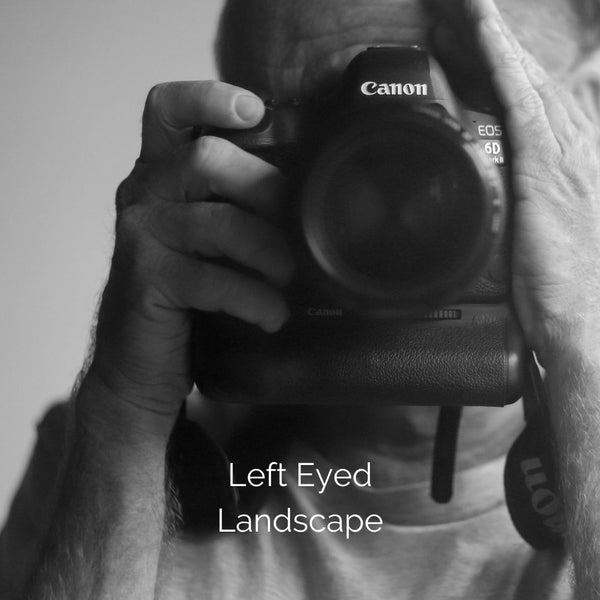
It can be disconcerting for subjects, having someone whose eyes they can't see, staring at them through a lens. The typical right-eyed portrait photographer has their face showing, offering praise, and keeping their subjects engaged.
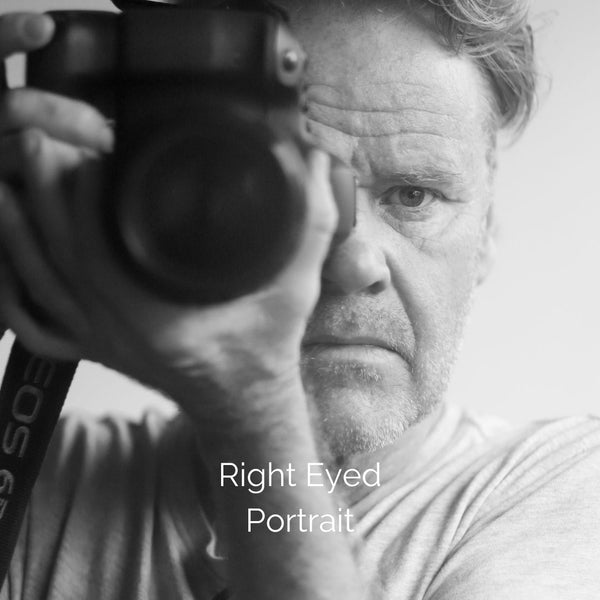
The left-eyed photographer is basically creeping. You can't see our mouths when we're talking. That's if we talk at all! In the 2x3 world of ocular myopia that we are immersed in, having to speak is like coming out of a dream.

I had my first opportunity to come out of my insular world in the nineties, when I bought my first auto-focus film camera. With the effort of finding focus done by a machine, I could have joined all the rest, blowing raspberries and grinning, or whatever one does to engage subjects. However, not being part of a community of photographers (I was an architect, only shooting portraits for friends) the thought of switching eyes, for the sake of ergonomics, never even entered my mind.
Neither did it occur to me in 2010, when I got my first DSLR camera. I did a lot of street photography with it, for an architectural book that I published, on the subject of cycling in cities. In the haste of capturing people on bikes passing buildings, I could never figure out why my camera settings kept changing. I would be going along fine and then blem: some mad-arse colour setting or exposure compensation, would be ruining all of my photos. Having my left eye to the viewfinder, meant my nose was pressing random back buttons.
I didn't even twig in 2019, when I first bought a camera that had a touch-screen. The world I go into, shooting left-eyed, is so compelling I don't notice when my nose turns into a renegade thumb, moving focal points and doing all manner of mischief.
With auto-focus being so clever these days, it is high time, you might think, for me to work with, not against, my camera's asymmetric design. It is time, you might think, for me to learn from the vast majority of "masters" of portraiture, about engaging my subjects with banter. It's time I started shooting with my right eye!
No it's not.
The thing I love about SLR photography, that I've loved since the eighties, is journeying inside of the lens. I've tested rangefinder cameras and cameras with electronic viewfinders, but for me there is no substitute for that magical view, via that upside down periscope of forty-five-degree angled mirrors, and the same glass your subject is seeing.
The effect on most people who have modelled for me, has been no less compelling for them. I'm not talking about experienced models, who go through their routines. I'm talking about people who come to a shoot with no preconceptions.
Watching them through the lens is like watching people in one of Andy Warhol's old screen tests, when they realise Andy is not going to direct them. Warhol used to set the camera rolling and leave. They would be left alone with a camera, while Andy was leaving the building!
Through my lens, I watch people go through the same awkward transition, from being on location with me, to being alone with a lens. The camera is not just some unobtrusive object, off to one side, from which a record of an encounter is captured. The lens is the subject of the encounter. It has a presence, like Hal.
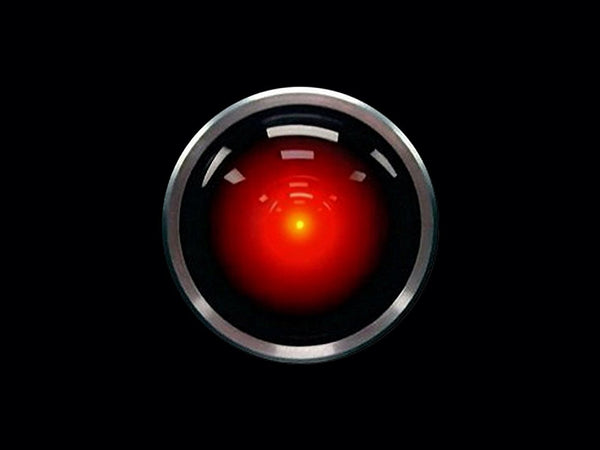
I know what it's like, because I've been on that side of a portrait shoot too. Between 2012 and 2018, I was small-f "famous" in Holland. NAi010, the Rotterdam publishers of books on art and architecture, made my book Cycle Space their leading title in 2012. Suddenly I was posing for more photos than I had to pose for at my wedding! Of all the shoots, one sticks in my mind, with a woman who took me out on location.
I felt my adams apple move when she went quiet, came close and for a moment stopped shooting. Before she clicked again, we had met in the lens. I moved from speaking with her, to speaking with everyone in the future, who would see the next photo she took.
The result is an image that captures my inner sadness and propensity to pass judgement. It's not the face I would normally choose to present to the world, or anyone taking a photo. Is it me though? My god, yeah!
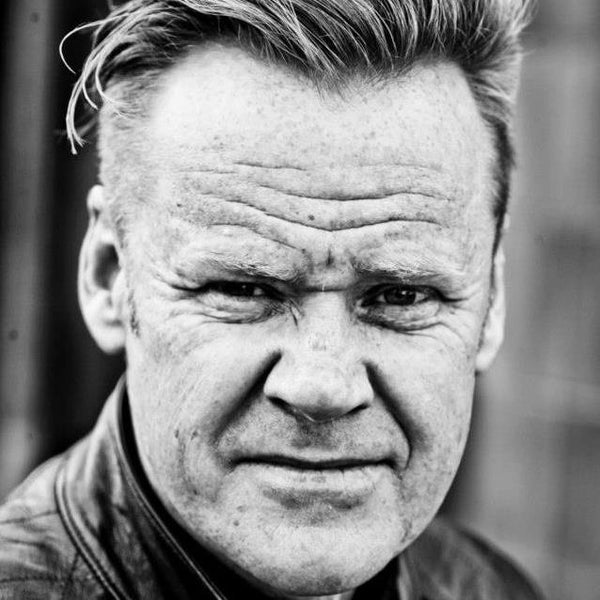
I think a lot more about photography now (enough that I would write a blog post about being left-eyed), because I'm shooting professionally, in a sense. I don't accept payment to do shoots I'm going to hate. I pay myself to take photos, for my own swim brand. I do it with independent models, "creatives" and friends.
I'm reluctant to work with agency models. The models are great. It's their agencies that I can't stand. All modelling agencies are interested in are perpetual rights to the photos. It's a rent-seeking racket. They pay their own rent from the handful of photos, taken in the past of their models, that are still being printed today. Every time one is printed, they put their hands out for money. Do they remit 85% to the models, years later, when the models have died or grown old? Hmm.
The only advantage with agency models, if you can even call this an "advantage", is they are bullied into staying rake thin. For vanilla clothing brands, another "advantage", are their far-away eyes—eyes that say "I am a model". Neither of these are such great advantages, for the kind of brand I am building, that I would not work with self-represented or amateur models. As long as they fit the demure brand image I'm building, all I need are models who are open to creative ideas and who are comfortable in their own bodies.
In the past two years since I started, I have taken a lot of good product photos. When the light and mood strike though, each shoot becomes a portrait shoot too. Part of my payment to models are the portraits I am able to give them, that I like to think capture their true selves.
What you are seeing here, are people looking at lenses. They are looking at you! My own face at the time was behind a camera. I had long since shut up. These models weren't looking at me.
As a left-eyed photographer, there is a way I could shoot, left-eyed, that would make me a part of my pictures. I could turn the camera clockwise, by ninety-degrees, and press the shutter button with my right thumb.

The idea for this blog post stemmed from a short video about a left-eyed photographer, who uses a rangefinder camera with the viewfinder off to one side. Almost all of her photos, she takes holding the camera side-on, with the shutter button in her right thumb.
That's twenty-thousand dollars worth of (compact) camera and lens she is holding. Even with my best lens, my rig is only worth six. "If I spent more money, would my photos be better?" That was the question that moved me to write this short essay.
The lens optics and sensors in her camera and mine are both perfect. The only difference, if I bought such a camera, would be the shooting experience, for my subjects and I.
As far as my own experience would be concerned, I can say the camera she is holding (a Leica M10) would be about as much fun to look through as a toilet roll held to my eye. The magic in the lens only goes to the sensor. All the user gets with a range-finder camera, is a piece-of-shit sight that is off to one side.
So then we ask what it is like for the subject, seeing half of a face and a pocket sized camera. According to the theory, people go about their business and don't even react to small cameras. If that is true, and if the end goal is a photo of real life, then the unobtrusive small camera would be the best tool.
The end goal, for me, is a photo of a subject who knows she is making a photo. Real life has stopped. Even posing has stopped. Her and I are inside of a lens, addressing all moments of time in the future, when the photo being made will be viewed.
If this interests you, you can follow my second Instagram profile @steven.fleming.photo You can message me there, if you think we might both enjoy collaborating in this way.
Check back on this website as well. By then, some camera brand may have released a left-eyed, right-handed model. There may even have been a technological advance that will have convinced me to shoot with my right eye. If something of that nature should happen, to change the way I take photos, I'll write another blog post to recant.
Until then, I'll be hiding my face. My models and I won't be in the moment. We'll be inside the photos we're making.

